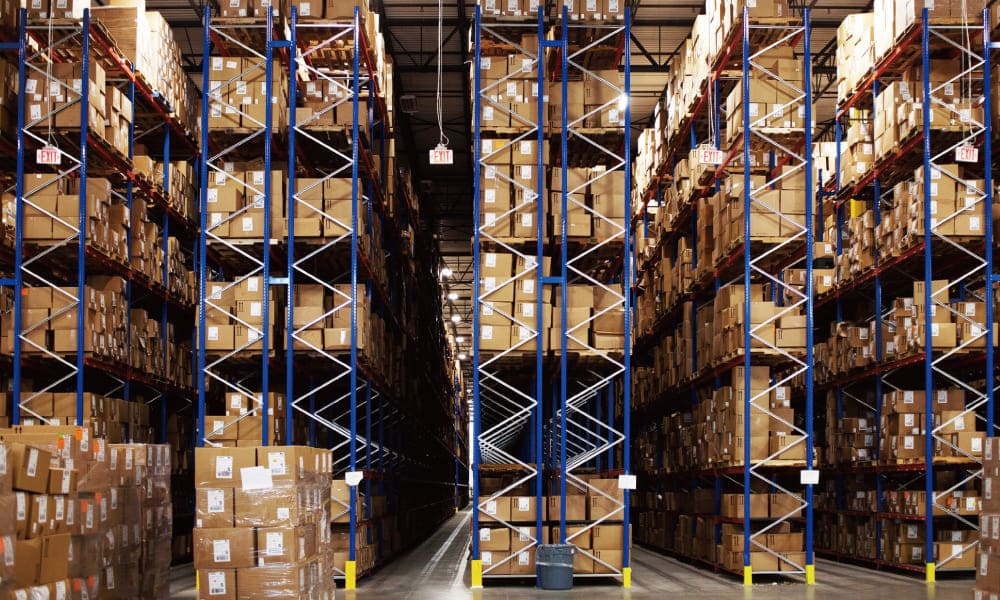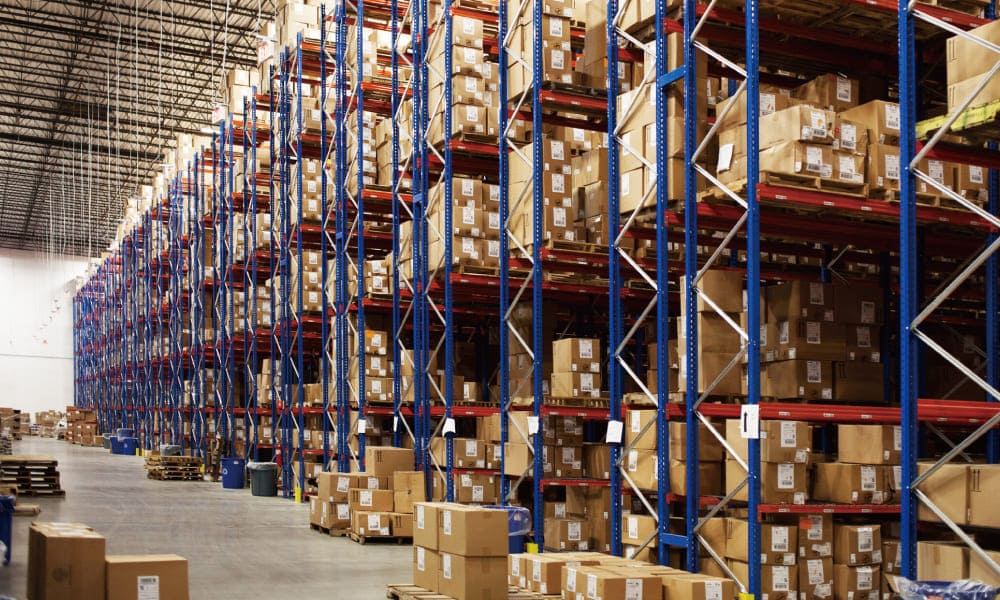Call Us :8615298359310
Call Us :8615298359310
A Very Narrow Aisle (VNA) warehouse is a type of warehouse that maximizes the utilization of floor space by saving aisle space. VNA racking systems make it possible to utilize more of the available floor space, accommodating high-density storage needs while maintaining efficient access to goods. This guide provides a detailed, step-by-step explanation of how to design and build a VNA warehouse, outlining the key considerations and strategies required for success.
What is VNA Racking Systems
A VNA racking system is a solution that maximizes warehouse storage by significantly reducing aisle widths compared to traditional pallet racking. With aisles typically between 1.5 and 1.9 meters wide, this system allows for increased pallet positions within the same footprint, making it ideal for high-volume storage operations. The racking structures in VNA warehouses are typically designed to accommodate pallets or smaller items, enabling flexible storage configurations.
Unlike conventional racking systems, which have wider aisles (3 to 4.5 meters), VNA racking requires specialized handling equipment such as trilateral or bilateral turret trucks and automated storage and retrieval systems (AS/RS). These machines are designed to maneuver effectively in the narrow aisles, ensuring that goods can be quickly retrieved and stored without disruption.

Key Benefits of VNA Warehousing
Building a VNA warehouse brings several notable advantages:
Planning and Designing a VNA Warehouse
When designing a VNA warehouse, there are several crucial factors to consider to ensure optimal functionality and storage capacity.
1. Space Optimization
The primary goal of a VNA racking system is to maximize the use of available space. This requires detailed planning and analysis of the warehouse layout. Begin by assessing the available floor space and determining the most efficient aisle configuration. Aisle widths should be minimized to between 1.5 and 1.9 meters, depending on the specific handling equipment to be used.
Additionally, it is important to consider the height of the warehouse. VNA racking systems are typically designed for high-bay installations, allowing you to stack pallets vertically. This increases storage density while maintaining accessibility.
2. Choosing the Right Racking Structure
Selecting the appropriate racking structure is critical to the success of a VNA warehouse. The racking units must be designed to accommodate the type of goods being stored, whether these are pallets or small boxes. The racking system should be adjustable to allow for storage flexibility, particularly if the warehouse will handle a variety of product sizes.
High-strength materials are recommended to ensure the durability of the racking system, especially in high-bay applications where heavy loads are common. Racks should also be designed to integrate seamlessly with any automated systems, such as AS/RS, that will be implemented in the warehouse.
3. Handling Equipment for VNA Warehouses
One of the main challenges in operating a VNA warehouse is the need for specialized handling equipment capable of maneuvering in the narrow aisles. The most common types of equipment used in VNA warehouses include:
Selecting the appropriate handling equipment depends on the volume of goods to be moved and the degree of automation required. For high-turnover operations, integrating autonomous mobile robots or shuttle systems may also be beneficial.

Implementing Automation in a VNA Warehouse
Automation is becoming an increasingly popular choice in VNA warehouses due to its ability to improve efficiency, reduce labor costs, and minimize human error. One of the most effective ways to automate a VNA warehouse is through the use of Automated Storage and Retrieval Systems (AS/RS).
1. AS/RS Integration
AS/RS systems, specifically trilateral stacker cranes, are designed to operate within the narrow aisles of VNA racking. These cranes are capable of autonomously picking up and placing pallets in three positions, enabling faster movement of goods and reducing the risk of accidents or damage.
By automating the storage and retrieval process, businesses can achieve higher throughput, reduce the need for manual labor, and increase the overall accuracy of their inventory management systems. AS/RS systems are also highly scalable, making them ideal for growing businesses looking to expand their operations.
2. Conveyor Systems and Robotics
In addition to AS/RS, businesses can further enhance automation by implementing conveyor systems and autonomous mobile robots (AMRs). Conveyor systems can transport goods to and from the aisles, reducing the need for manual handling. AMRs, on the other hand, can be programmed to pick and deposit items at various locations within the warehouse, further optimizing the order fulfillment process.
Fix Common Challenges in VNA Warehouses
While VNA warehouses offer numerous benefits, there are also several challenges to consider during the planning and implementation stages.
1. Specialized Equipment Costs
One of the main challenges of operating a VNA warehouse is the high cost of specialized handling equipment. Trilateral and bilateral turret trucks, as well as AS/RS systems, represent a significant investment. However, the long-term benefits, including increased storage capacity and improved efficiency, typically justify the initial expense.
2. Training and Safety
Operating within narrow aisles presents additional safety risks, particularly if manual forklifts are used. It is essential to provide comprehensive training for forklift operators to ensure they can navigate the aisles safely. Additionally, installing guidance systems, such as mechanical or wire-guided solutions, can help reduce the risk of accidents by ensuring the forklifts remain within the designated aisles.
Wire-guided systems, in particular, use a magnetic field generated by an embedded wire in the floor to guide the forklift’s movement, ensuring precise navigation in narrow spaces.
3. Battery Maintenance
Electric-powered handling equipment, such as turret trucks and AS/RS cranes, require regular battery maintenance to ensure uninterrupted operation. It is important to establish a routine maintenance schedule and have spare batteries on hand to minimize downtime during recharging.

Pros and Cons of VNA Racking Systems
Pros of VNA Racking System
Cons of VNA Racking System
Final Thought
For companies seeking high-density storage, the VNA racking system provides a flexible, scalable, and high-performing solution. If you would like to get a quote or inquire about a VNA racking system, don't hesitate to contact us now, our team of experts is ready to find the best fit for your warehouse.
Copyright © 2024 Jiangsu VISON Logistics Technology Co., Ltd. All Rights Reserved.  Network Supported
Network Supported
Sitemap | Blog | Xml | Privacy Policy